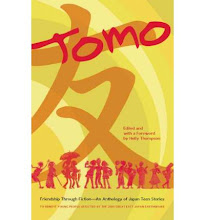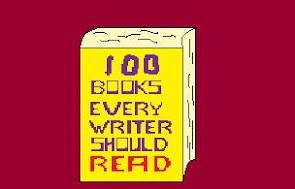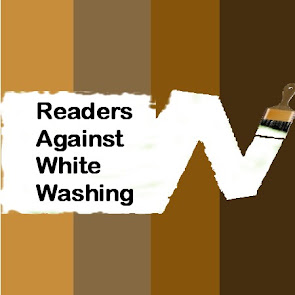Correction: In last week's post about writing foreign settings, I said the presenter Ann Slater was part Nepalese, she's actually part Tibetan. Sorry Ann!
A couple weeks ago, the YA highway's Field Trip Friday pointed me to a post from a writer who writes LGBTQ characters. She admitted looking back over the books she's read recently and and noticing that not many of them had a LGBTQ MC. A similar thing happened to me at the beginning of the year, when I discovered The Colorful Chick Lit challenge. The basic requirements were to read between 4 and 12 chick lit books with MCs who were person of colour, ie not white. I'm not a big chick litter, but when I found the group, I realised that even though I had read at least 50 books last year, I could count the number of non-white MCs on one hand. That wouldn't really do, especially since I've never written a white MC.
How it happens
It's really easy as an avid reader surrounded by avid reader friends to just read the recommendations you get from them. And when your as active in the writers' online network as I am, it's almost a full time job just reading the books your friends wrote. It's quite possible to fill your days with fantastic books, but never touch on topics that are important to you.
We fight together
(That's the name of a recent theme song from one of my fave anime.)
So how do we combat this issue. It's simple really. Decide what kind of books you need to read, and how often you can commit to them. So far this year, I've read 11 books with non-white MC's. Two years ago I discovered TO KILL A MOCKINGBIRD, and I decided to embark on a mission to read the classics that I've never read. I've only read 3 this year, and I'm currently reading Wizard of Oz in between everything else.
12 books is not a lot in the grand scheme of things. But it's still 12 that I would not have read if I had not made a conscious decision to do so.
What to look for
I'm reading :minority MC's and classics, but there are lots of other things you might want to choose from. Like Robin Talley, the author I mentioned earlier, you might want to read more characters like your MC. You may want to read more books in the genre you write, or in genres that make brief appearances in your narrative. You may want to read authors that are really strong in elements of writing where you are weak. The plotting in Inheritance, the final instalment of Eragon, taught me so much (and makes me want to hide myself from every keyboard and pencil so that I might never again be tempted to put down a story).
While reading
It's fine to read passively, and just enjoy the book. But you might want to read a book every once in a while like you would a text book. Think about what works well, and what doesn't. Look at the plot, characters, setting, theme, quotable quotes, anything you can think of. You can make notes, or just soak up the lessons.
There's nothing that says you HAVE TO read by design, but as an author, you've got so much to gain from it.
Finally, to Asiamorela, an apology.
For a "wordsmith," I'm really awful at conveying what I mean. In Tuesday's post, I was not saying that places outside the US have monocultures. I can't believe that I wrote in a way that that meaning could be construed, after all I'm from a little island that's often stereotyped. And I've been all over the world, so I know the diversity. And I live in Japan, which has got to one of the most stereotyped countries by Western people.
Rather, my point was three-fold. Firstly, despite the rich, developed cultures, there seem to be more unifying threads in many other countries than in the US. You'd be hard-pressed to find many similarities between a New Yorker and a wannabe starlet in LA. But in the sprawling Caribbean, made up of so many nationalities, the Barbadians in the southeast have a crap ton in common with the Jamaicans in the northwest.
Secondly, people outside the countries do often point to certain things and say, that is French, that is Spanish. Whether or not everyone in France eats croissants, they're considered a French thing. I don't know if there's an American equivalent. For example, you might say that the hamburger is American, but most people don't think of America when they eat it. People almost invariably think of Japan when they eat sushi.
Also, America's a baby compared to Asia and Europe. Living together for thousands of years is immensely different from a few hundred.
Sorry for not conveying my meaning better. .
PS, Dianne, I was trying to be nice. I see the same thing in Japan. Everyone here is convinced Hawaii is it's own country. But at least they have the excuse that noone else in the world speaks their language.
Free today only - The Billionaire's Enemy
3 years ago












3 comments:
Completely understood/understand where you were/are coming from with this, Claire. Very well stated (I think).
I think you can force diversity to an extent. That extent being exposure. It's the whole, "You can lead a horse to water..." idea. You need to lead your mind to knowledge, wether it soaks in or not depends on a number of factors.
Great post, and good luck in diversifying your reading. I think it's a great idea.
No apology was needed, but thanks for answering my concerns. As a matter of fact, I think I agree with your point (anyone who'd have recorded me in the past 10 years could tell you how often I've mentioned the US's "diversity"); I meant to nuance it rather than oppose it. I agree that in certain ways, US and more traditional national countries are not comparable. But to me, it's like the US are more diverse on a certain level (maybe, it's true, on a kind of cultural level), and less on another (ideological?). Perhaps it's this very combination that allows them to get enough of their own literature/settings (they can have both the diversity and the understanding).
Lastly, I believe the US are equally stereotyped by foreigners. Even when they come to Montreal, which is perhaps one of North America's most "European" cities, French people will notice things they identify as "American". I myself didn't realize how many cultural references I was missing when reading American novels before I came to Canada, where it's either the same (usually American companies having made it to Canada, so it's not really a case of Pan American culture), or American things are simply better known. In spite of the differences from one end of the US to the other, I wonder if they'd have left all these references in the books if they were incomprehensible but to those familiar with a specific area/background.
However, I know Americans also classify books in categories other countries wouldn't consider relevant... (and what are genres/categories for, if not to help readers find what they will like/understand?) For example, African-American, or the fact that interracial or LGBT are subgenres of romance...
So anyway, once again, my intention is not to disqualify your point. I am, in fact, being slightly off topic in a conversation which I believe is very vast and complex.
I have two comments, first regarding intentional reading and all that good stuff. I tend to read a lot, so far this year I've read about 120 books. Last year I read 160. I read fast and try not to over analyse the things that I read, I just take it what ever strikes me. I know some writers don't like to read in their genre because they don't want to copy other writers. I avoid fear of copying one person by reading everyone. If I have a broad understanding of the literary scene, I can find my own voice in it without worrying that I'm to similar to one thing. That being said, I'm a white chick from the good old US of A and so are the characters that I write and the majority of the things I read. I really enjoy reading books about people from other cultures, but I've never tried to go out of my way to find them. I just try to be open to read anything and everything, or at least as much as I can find time for.
Onto your second topic of what is "American". America is fake and plastic, that is what American culture is and even how most American's define themselves. The best example is cheese. "Swiss Cheese" is good and even if it's called swiss lots of people in America eat it. American's also eat cheddar cheese and blue cheese and pepper jack cheese, and then of course there is american cheese. "American cheese" is fake and tastes like plastic and doesn't even have more vegitable oil than dairy in it, but it is the most popular kind of cheese in America and every single American calls it "American cheese" because that is its official name and if you want to eat plastic not cheddar you have to ask the guy at the deli for American cheese.
While cheese is just one example. I think the plastic nature of most American consumerisum is one of the easiest ways to define American culture.
Post a Comment